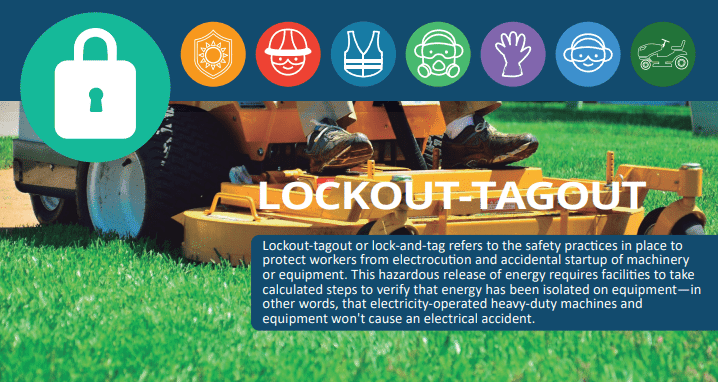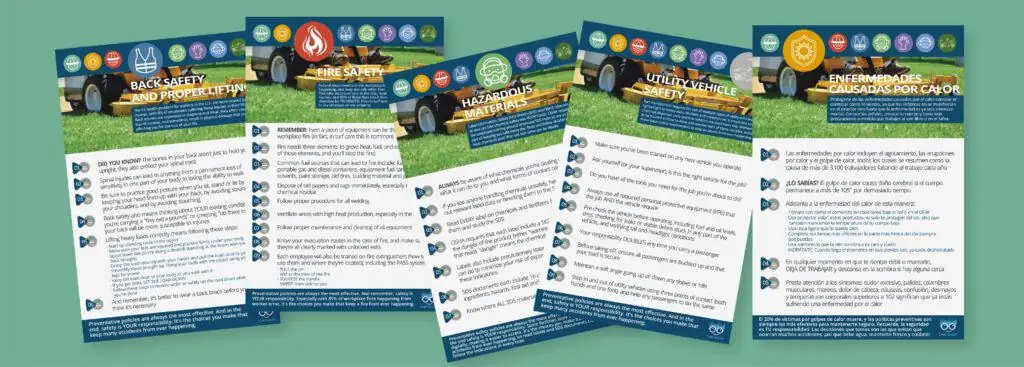
Anyone who’s worked with machinery, or even just in a store that utilizes a compactor, has probably heard the term “Lock Out/Tag Out” (or LOTO) before. And while most workers understand LOTO as simply don’t touch a machine if it has a tag, there is a lot more to the LOTO process than you might expect. Knowing the process in and out can help keep you safe, especially if someone else has failed to follow proper protocols.
When done properly, the Lock Out/Tag Out system prevents workers from hazardous energy that can be the result of faulty or malfunctioning equipment.
Let’s get more specific. When most people think of LOTO and how machinery may be harmful, the first type of energy that usually comes to mind is hydraulic—for example, something along the lines of a trash compactor or a baler for cardboard and paper waste.
Though, while hydraulic may be the most common, other harmful energies include electrical, chemical, thermal, pneumatic, and mechanical. The unexpected start-up of these machines while being serviced can cause injury or death of people servicing the machine, of nearby workers, or—in extreme cases—even cause harm to the nearby community if the equipment or its fuel is highly combustible.
Why we have LOTO systems
In addition to the LOTO program, it’s important to have a system in place to help prevent these hazardous energies from escaping, otherwise known as an Energy Control Plan.
Energy Control Plans combined with regular equipment inspections are required by OSHA, so if you are unsure about your company’s safety processes, be sure to talk to your superintendent for more information and training.
The LOTO system itself has six fundamental and sequential steps that must take place each and every time there is a maintenance issue with a particular machine. This ensures that the status of the machine is clearly indicated to all workers, and helps ensure the safety of all staff performing maintenance on the machine.
Going through each step in order, let’s start with the first and most important step.
1. Preparation
Preparation is the most important step since it gives service workers and other staff all the information they need on how to best handle the issue with each piece of machinery. In this step, an authorized worker determines all the types of hazardous energy that can be produced by a machine needing maintenance, as well as how to control the hazardous energy.
2. Shutdown
The next step is to shut down the machine needing service down. With the shutdown complete, it’s also important to notify any relevant employees who would regularly have access to the machine or any other worker affected by the shutdown, even if they won’t play a role in the maintenance process.
3. Isolation
The next step is to isolate the machine from any power source. This usually just means unplugging the machine, though some may have backup batteries or other internal power sources that have to be disabled or disengaged prior to performing work on the machine.
Once unplugged, it is recommended that you also cap the plug with some kind of covering to further indicate that the machine should not be plugged in again until maintenance has been completed. As long as the machine has power, there is a chance it may start up, either due to a worker activating it, something accidentally hitting the control panel, or even an electrical issue that initiates the machinery without any external input.
4. Lock Out/Tag Out
In this step, which the whole process gets its namesake from, the authorized employee locks out any energy source or activation method the machine has so that it remains in the “safe” position throughout maintenance. These locks are specially designed so that only the authorized service worker can disengage the locks to work on the machine.
Once complete, the worker then tags the machine with details about the machine and its maintenance, the reason for the lock out, and the name of the authorized worker who performed the lock out.
5. Check stored energy
Even after the machine has been isolated and locked out or tagged out, it is important to make sure there are no other residual hazardous energies that can cause any threat when servicing the machine. These energy sources can include batteries to power the machine internally, residual chemicals in pipelines connected to the machine or within the machine, hydraulic presses or lifts, among other sources. Once these sources are restrained, relieved, or disengaged, it’s time to move on to the final stage of the Lock Out/Tag Out process.
6. Isolation verification
The final step is all about double checking work and making sure you haven’t missed anything in the previous steps. While you or the authorized service worker might have caught everything the first time through, that’s no guarantee every energy source stayed isolated. An employee unaware of the LOTO procedure may have plugged the machine back in while other checks were being performed, or perhaps one of the restraints on a hydraulic press came loose, or a valve wasn’t fully sealed when isolating a pipeline running to the machine. This last step ensures there are no residual safety issues before maintenance work begins.
Remember, safety is your responsibility. If you have any questions or want to see the Lock Out/Tag Out process in full force, talk to your superintendent.
